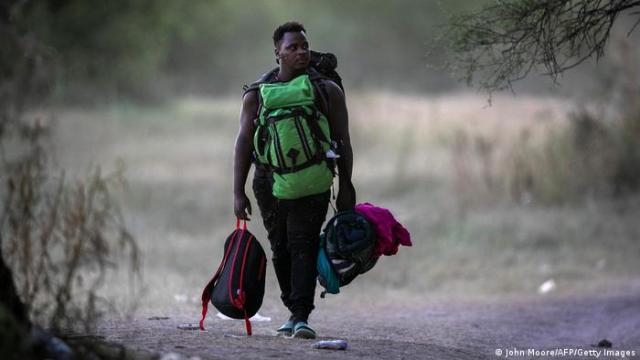
Despite the pandemic and tougher entry restrictions, migration from and within Latin América continues to grow. But it remains dangerous, with many illegal border crossings often turning into b death traps.
By DW
Oct 10, 2021
Nothing has been able to stop people in Latin América from setting off to seek a better life – neither the tightening of entry requirements in different countries, the harsh terrain, weather catastrophes, nor the coronavirus pandemic.
Migration in Latin America has increased due to economic uncertainty, security problems and political crises. The situation in Venezuela alone has created more than five million migrants, most of whom, about 4.6 million, are being accepted by other countries in the region.
“While the pandemic has disrupted many facets of our daily lives, the reasons that force people to flee – conflict, insecurity and other factors — have not stopped,” William Spindler, UN Refugee Agency (UNHCR) spokesperson for Latin America, told DW. “In fact, the total number of refugees and migrants in the Americas increased by 8% in 2020 compared to the previous year.”
There are two main patterns of migrant movement in the region. One is northward, through Central América, crossing México and ending in the United States. The other is interregional, that is it takes place between the countries of Latin América and the Caribbean. In recent years, these migration routes have been dominated by Venezuelans but Colombians and people of other nationalities are also represented.
Navigating an obstacle course
The borders between countries pose major hurdles in the migrants’ journey. Like an obstacle course, these hindrances have to be navigated and overcome in order to cross borders between countries and advance toward a final destination.
Tougher entry requirements – both by individual states and due to pandemic-related restrictions – have failed to curb migration. Instead, they’ve just made the journey more dangerous.
When migrants cannot cross the border at legal crossings, they use illegal border routes known as “trochas,” often risking their lives.
“Many people travel on foot, using irregular border crossings and traversing rivers, jungles, high mountain passes and deserts, and crossing the ocean in boats that are barely seaworthy,” Spindler from the UNHCR said. “Many lose their lives or face serious dangers on these crossings, including human trafficking and smuggling, sexual and gender-based violence, labor exploitation and extortion by gangs and criminal groups,” he added.
The smugglers, who are referred to variously as “coyotes,” “chuteros,” “chamberos” or “trocheros,” are paid to accompany the migrants along the route. They offer their services for, at times, huge amounts of money which people pay in desperation. Nevertheless, in many cases they do not succeed in reaching their destination.
…
Read More: DW – Migration routes in Latin America fraught with deadly risks
…

